At the end of this lesson-
- 1. You will be able to explain Cryosurgery.
- 2. You will be able to describe the advantages of cryosurgery.
- 3. You will be able to describe the application of ICT in space exploration.
- 4. You will be able to describe the application of ICT in defense.
Go for Bangla Version
Cryosurgery:
The Greek word cryo means “ice cold“ and Surgery means “hand work”.
Cryosurgery is a type of surgery that involves the use of extreme cold to freeze and destroy diseased tissue, including cancer cells.
Cryosurgery, also called Cryotherapy, cryoablation, percutaneous cryotherapy or targeted cryoablation therapy.
Although cryotherapy and cryoablation can be used interchangeably, the term “cryosurgery” is best reserved for cryotherapy performed using an open, surgical approach.
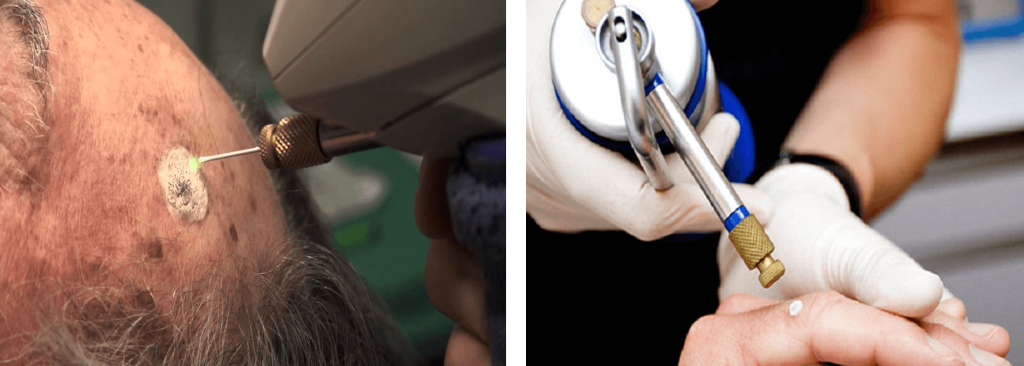
During Cryosurgery, liquid nitrogen or high pressure argon gas flows into a needle-like applicator (a cryoprobe) creating intense cold that is placed in contact with diseased tissue. Physicians use image-guidance techniques such as ultrasound, computed tomography (CT) or magnetic resonance (MR) to help guide the cryoprobes to treatment sites located inside the body.
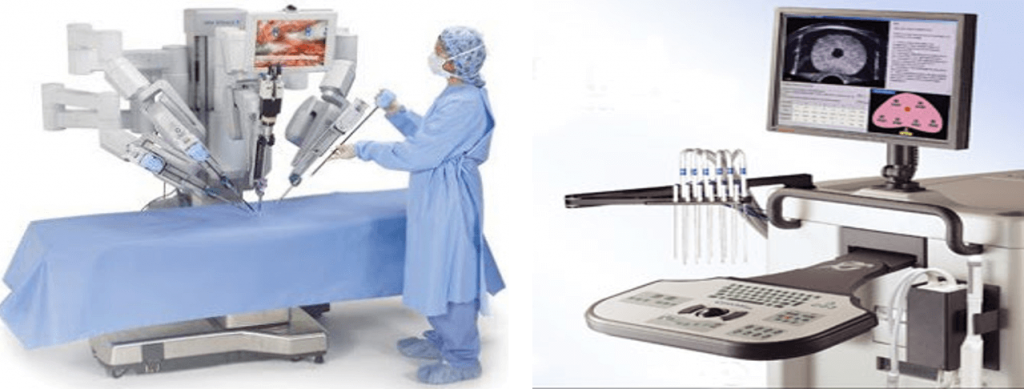
In this method the following cryogenic agents or gases are used to freeze diseased parts –
- Liquid nitrogen
- Carbon dioxide
- Liquid Argon
- Di-Methyl-Ethyl-Propane etc
The way how a Cryosurgery is performed:
This method first identifies diseased cells or tissues using Ultra Sound or MRI instruments. Then, with cryoprobe or imaging device, various cryogenic agents such as liquid argon gas is applied to the diseased cells. As a result, the temperature of the cell drops to -120 to -165 o C within 5-12 seconds. Due to the temperature drop, the cell becomes frozen. Blocking the blood and oxygen supply to the iceberg causes tissue damage. Again with the help of a imaging device, helium gas is applied inside the cell or tissue and the temperature is raised from 20 to 40 o C . Then the ice of the solid cell or tissue melts and the cell or tissue is destroyed.
Application of Cryosurgery:
- Warts, moles, skin tags, solar keratoses, molluscum, Morton’s neuroma and small skin cancers are candidates for cryosurgical treatment.
- Several internal disorders are also treated with cryosurgery, including liver cancer, prostate cancer, lung cancer, oral cancers, cervical disorders and, more commonly in the past, hemorrhoids.
- Soft tissue conditions such as plantar fasciitis (jogger’s heel) and fibroma (benign excrescence of connective tissue) can be treated with cryosurgery.
Advantages of Cryosurgery:
- It is less invasive than surgery, involving only a small incision or insertion of the cryoprobe through the skin.
- Consequently, pain, bleeding, and other complications of surgery are minimized.
- Cryosurgery is less expensive than other treatments and requires shorter recovery time and a shorter hospital stay, or no hospital stay at all.
- Physicians can focus cryosurgical treatment on a limited area, they can avoid the destruction of nearby healthy tissue.
Disadvantages of Cryosurgery:
- In this way, when detecting diseased cells or tissues, the location of the healthy cells can be damaged if the location is not properly identified and cryosurgery is used.
- There are some side effects, but hopefully the side effects are temporary.
- In the treatment of skin cancer, cryosurgery causes the skin to swell, damage the nerve, decrease sensitivity.
- Side effects occur only in those who have prostate gland problems.
Space Exploration:
Space exploration is the observation of aerospace flying above the earth’s atmosphere and observing the environment and physical phenomena of that place.
In other words, Space exploration is the ongoing discovery and exploration of celestial structures in outer space by means of continuously evolving and growing space technology.
Various information and communication technologies are used for the operation of the spacecraft, the operation of the spacecraft, the observation of the spacecraft, the analysis of various databases, the creation of the spacecraft, the communication of the earth, etc.
The physical exploration of space is conducted both by unmanned robotic space probes and human spaceflight. The first successful orbital launch was of the Soviet unmanned Sputnik-1 mission on 4 October 1957.
The first successful human spaceflight was Vostok-1 carrying 27-year-old Russian cosmonaut Yuri Gagarin on 12 April 1961.
Driverless rovers took pictures from Mars and other planets and sent them to scientists where human beings are impossible to move.
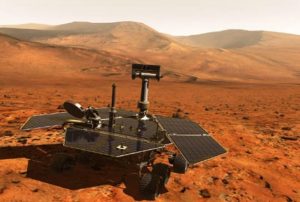 Fig: ‘Curiosity’ landing on Mars
Fig: ‘Curiosity’ landing on Mars
At present, speeding computers are used in space centers. Each computer completes simple and complex tasks by communicating with different parts. Some computers are needed to perform complex tasks, and a computer is kept in addition to solving hardware issues.
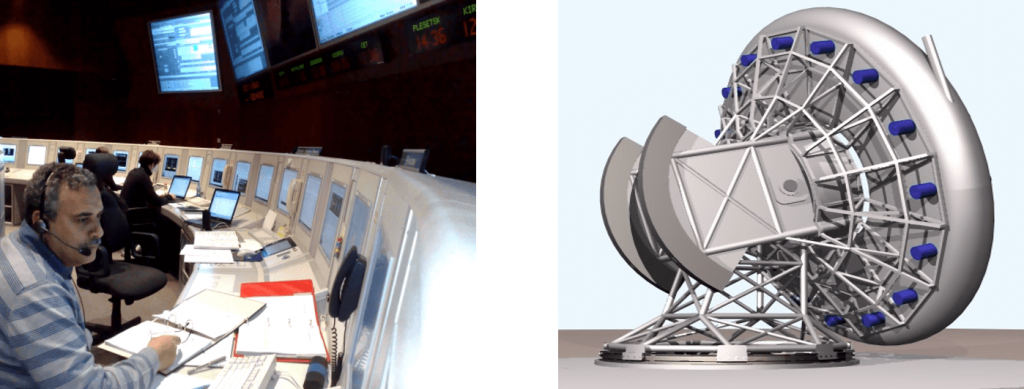
Fig: Spacecraft Station Control Room Fig: Spacecraft Communication Station on Earth
NASA is thinking about sensor web systems. As a result, smaller satellites will be created and transmitted instead of large-scale satellites with specific targets. They will be able to change positions and cover specific areas if needed.
Aims and Objectives of Space Exploration:
- To identify the features and prepare a list of the organic carbon compounds.
- To identify the characteristics that can represent the impact of organic process.
- To explore the minerals and the isotopic and chemical elements of the planet.
- To explain the formation and the change of soil and rock.
- To evaluate the process of the atmospheric evolution.
- To divide and identify the present state of the water circle and the carbon-di-oxide circle.
In this way, space expenditure will be greatly reduced. Aerospace operations will bring development across the globe by solving all the problems with information and communication technology.
Defense:
The defense industry, like many other industries, is heavily influenced by information and communication technology. There is a deep connection between the ICT and the defense industry. There is a direct or positive relationship between the two. ICT plays a vital role in the development of the defense industry.
Information and communications technology has taught the defense industry to make smart bombs where dumb bombs were used / manufactured. Earlier the war was people-centered and now it is network-centric. Where previously the results of the war were reviewed, now the war is reviewed in real time. Where before there was invasion from land and sea. Now, there is a software-based warfare, rather than a sky-and-space-centric, hardware-based battle.
Computers were used for military operations, firearms control, missile systems, tank management, radar systems, fighter jets and warships.
Information and communication technology is always used to protect communications between the land force, navy, air force.
Currently, information and communication technology is used in almost all areas of the military, including unmanned drone aircraft, commando operations, various military trials.
After the incorporation of ICT into the defense industry, real time warfare monitoring, network-based warfare progressed. News of all incidents on the battlefield immediately reached the Order / Instruction Center.
Soldiers now take advantage of many modern electronics with warships – allowing them to easily make the right decisions. Understand the enemy’s target and position itself, calculating the amount of time it takes to move from one place to another. Destroy enemy bases, can take command of commander immediately when they are exposed to a dangerous battle.
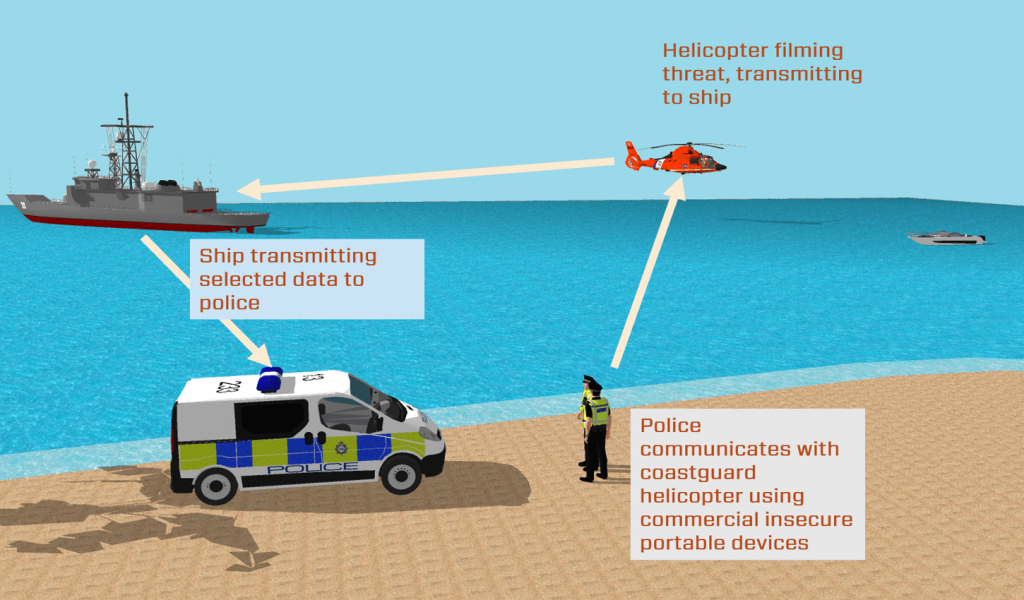
Telecommunication system for connecting land, sea and sky.
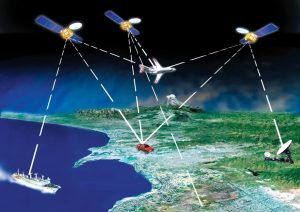
Optronic, optical electronic system. Battlefield Management System.
Lesson Evaluation-
Knowledge Based Questions:
- a. What is cryosurgery?
- a. What is cryotherapy?
- a. What is space exploration?
Comprehension Based Questions:
- b. “It is possible to do operation without bleeding”– Explain.
- b. Explain the treatment method in low temperature.
- b. “It is possible to give treatment in cold temperature ”- Explain.
- b. “It is possible to give treatment in cooling process”- Explain.
Creative Questions:
Read the stem and answer the question:
Mamun had a tumor in his hand that’s why he went to Dr Ripon. According to his suggestion, Mamun appeared at the Operation Theater on a certain date. In a short time Dr. Ripon completed the operation of the tumor at a very low temperature in a special way.
c) Which technology has the doctor used to treat Mamun? Explain
Read the stem and answer the question:
Liza went to the doctor for a skin problem. The doctor performed the tests and treated him with a low temperature.
c) Explain the method of treatment of Liza as mentioned in the stem.
Multiple Choice Questions:
1. Which one expresses the meaning of the word ‘Cryo’?
a) very hot b) medical c) sickness d) cold as ice
2. What does the word ‘surgery’ mean?
a) hand work b) treating c) cutting off d) perfect work
3. What is the technique for destroying abnormal or diseased tissue by applying too cold temperatures?
a) chromosurgery b) cryosurgery c) homosurgery d) biosurgery
4. Cryosurgery is used to treat which of the following diseases?
a) skin disease b) brain disease c) stomach disease d) dentistry
5. Cryosurgery is used to treat in which type of cancer?
i. Breast ii. Prostate iii. Liver
Which one is correct?
a) i & ii b) i & iii c) ii & iii d) i, ii & iii
Written by,
- Mizanur Rahman (Mizan)
- Lecturer of ICT, Shaheed Bir Uttam Lt. Anwar Girls’ College , Dhaka Cantonment
- Author at www.edupointbd.com
- Software Engineer at mands IT
- Former Lecturer of ICT, Cambrian College, Dhaka
- Email: mizanjust@gmail.com
- Cell: 01724351470
